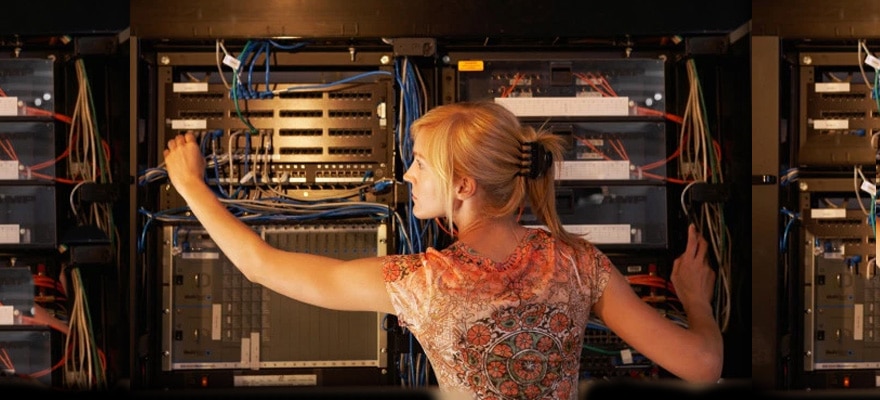Since the European Securities and Markets Authority’s latest regulations came into effect, much has been made of the percentage of traders that lose money when dealing with brokers.
Yet there is another, perhaps more significant, percentage gap between the number of men and women trading. According to data gathered by BrokerNotes, women make up an average of just 12 percent of visitors to broker sites.
Now I know what you’re thinking. You read the title of this piece and assumed it was going to be one of those annoying, smug, self-righteous articles that examines a statistical disparity and then attributes that disparity to some sort of bigotry.
Filled with all of the banal platitudes surrounding ‘diversity’ and ‘inclusion,’ it would finish with me lecturing you about how ‘we can do better’ if ‘we just try’ or ‘use love.’ But that ain’t me fellas.
This is just about making dough. Increasing the number of female traders in the retail industry would be beneficial for brokers. More traders, regardless of their sex, means more money.
Mars and Venus
How can brokers achieve this? The first step would be to identify the problem - or in corporate-speak ‘issue’ - and see why it is that women aren’t signing up to trade in the first place.
To do this, we can leave the confines of the retail industry and look other to areas of human activity. More broadly, why do women do some things in larger numbers than men and vice versa?
As we are wading deep inside the swamp of social justice activism, let’s break down - as simply as possible - two of the main streams of thought that are attempting to answer the above question.
On the one hand, we have people such as Cordelia Fine who have tried to argue that most ‘female’ and ‘male’ behavior is learned. If women only make up 10 percent of computer science students, it’s because they’ve been taught not to study computer science.
Opposing this worldview, we have the evolutionary psychology brigade. Professor Gad Saad’s book, The Consuming Instinct, is a great gateway into this field. These folks argue that evolution has worked on our brains such that the different sexes find certain things more or less appealing.
Personally, I find the latter view more convincing. In fact, a number of studies have shown that as gender equality becomes more widespread in a society, men and women become more divergent in what they do - i.e. a more gender equal society could mean fewer female traders.
Alternatively, I may just be a foolish, sexist white male that needs to check his privilege. Whatever the case, let’s presume that there are merits to both arguments and proceed with solutions that would fit with both worldviews.
Start Marketing to Women
Retail brokers’ marketing activities are heavily skewed towards male customers. If you don’t believe me, have a look at any YouTube, TV, Facebook or pop-up advert that a broker uses.
When women are included, they are generally scantily clad and accompanying the newly wealthy trader as some side candy. Risks and rewards, eh friends?
Beyond sexy ladies, adverts are also confined to more ‘male’ domains. The most obvious being the array of sports teams and players - whether they be in boxing, football or Formula One - that brokers sponsor.
[embed]https://www.youtube.com/watch?v=NPevfdwqwFM[/embed]
Funnily, if this is to change then proponents of the blank slate theory - that women just aren’t encouraged to trade - would have to admit that women prefer doing different things.
After all, if you want to target women through advertising, you have to target something they prefer seeing or doing. Unless of course, they have only been warped into doing those things by the same system that has encouraged them not to trade.
In order to make the changes in marketing strategy, firms could look to the gambling industry. Australian gambling companies have started to use different color schemes, language, and themes in order to target a female audience.
They have also replaced the male protagonists of their advertisements with female ones. Given that many people Down Under are panicking about an epidemic of female gamblers - don’t they realize they’re called the fairer sex for a reason? - it seems their efforts have been effective.
Change in Trading Strategy
Changing actors and colors isn’t the only thing that brokers, targeting potential female traders, could learn from the gambling industry. As with the online casinos, they should tamp down the adrenaline rush-infusing trading strategies in their adverts.
On average, women are generally more risk-averse than men. Studies have shown, for example, that they are less likely to risk losing money for a larger gain.
Behavioral economists Brad Barber and Terrence Odean found evidence to support this in a 2001 study. Examining 35,000 households, they discovered that men trade 45 percent more than women - a practice that saw women making more money from trading than men.
Gambling firms have already, at least unconsciously, recognized this state of affairs. Men are targeted with high-intensity sports betting, on football or horse racing for instance.
Conversely, women are targeted with much slower-paced adverts. As I’m sure many readers will know, female gambling adverts also tend to be people-oriented, they show women together - not alone in a room - and focus on games such as slots or bingo.
Brokers could mimic this by marketing their services with less risky trading strategies. Put less emphasis on those killer, make or break moments and play out a longer, more sophisticated, trading strategy.
People, not things
Lastly, brokers could get their creative, software-developing minds to launch more socializing opportunities for traders. By this, I don’t mean more signal sharing - although that could play a role in it - but some sort of network that would enable greater communication between a site’s traders.
The reason for this is, as briefly alluded to, women have been shown to be more interested in ‘people’ than ‘things.’ For example, women make up nearly 90 percent of social services workers in the USA. Similarly, even amongst software workers, most women are front-end developers - i.e. they work on the stuff users see and interact with.
By making trading a more communal experience - and less about number crunching and graphs - brokers could make themselves more appealing to women.
As a humble hack, I’m certainly not suggesting that the above solutions are a sure-fire way to get women rushing to their keyboards and signing up to trade - I’ll leave the instant rewards to the FX brokers.
But it would be worthwhile for brokers to explore how they can get more women involved in trading. Besides any minor research costs, they have little to lose and a massive new client base to gain. That’s a trade they can’t afford to miss.






















